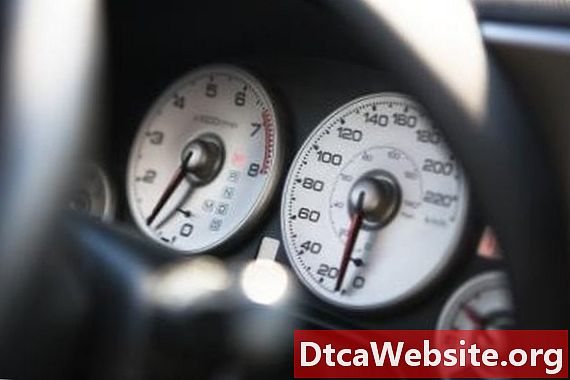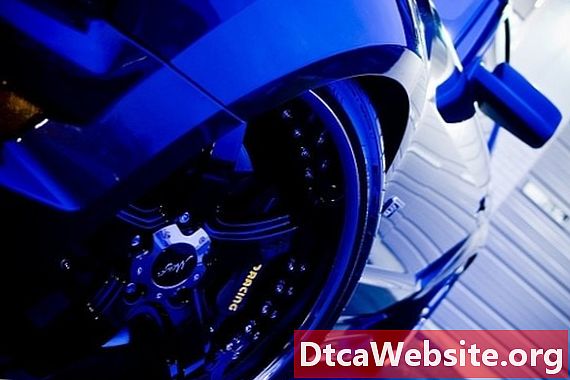
Contenu

An OBD-II scanner is the second version of the On-Board Diagnostics tool, which monitors engine functions. If a vehicles engine experiences a malfunction, the "Check Engine" light comes on. An OBD-II scanner can access the resulting trouble codes within the vehicles diagnostic computer, or power train control module. This computerized hand held device can only interact with vehicles manufactured in 1996 and later. Earlier vehicles use older diagnostic systems which vary depending on the vehicle manufacturer. Using an OBD-II scanner is relatively easy, and accessing trouble codes only takes a few minutes.
Step 1
Make sure the vehicle is turned off. Locate the Data Link Connector under the steering wheel. This is an outlet that allows access to the diagnostic computer, which in most vehicles is on the driver side.
Step 2
Connect your OBD-II scanner to the Data Link Connector. The scanner cable has in a 16-pin plug that should naturally fit into the outlet.
Step 3
Insert your vehicles key into the ignition cylinder and switch to "On." Depending on the brand of OBD-II device, you may also need to turn the engine on and allow it to idle.
Step 4
Turn the device on, if it did not auto-activate itself.
Step 5
Key in a command to "read" or "scan" the diagnostic system. How to do this depends on the brand of OBD-II device you are using. Button layout differs from model to model, and some devices may use a menu system. Exact code retrieval instructions will be located in your devices handbook.
Step 6
Read through the trouble codes on your devices read-out screen. Copy these codes down onto a sheet of paper. Some devices are USB equipped and can connect directly to a computer with a USB cable. If you have this type of OBD-II scanner, device-to-desktop connectivity will covered in your scanners handbook.
Step 7
Look up the trouble codes in your devices handbook. Typically, generic OBD-II codes are located in an appendix toward the back. These are the standardized generic codes good for all OBD-II compliant vehicles. Manufacturers also have a supplementary set. A vehicles owners manual will not have these codes. You will need to be look them up online or in a repair manual for your particular vehicle.
Turn the vehicles electrical system off. If you had to start the engine, turn it off as well. Unplug the OBD-II scanners diagnostic cord from the outlet and turn the device off.
Tip
- OBD-II scanners differ in function. Some only work as mere trouble code readers, while others can interact with sensors throughout a vehicle.
Warning
- Accessing trouble codes will not turn your check engine light off. Accessing the codes will only tell you the malfunctions the vehicles computer has recorded. Codes can be erased with a scanner, but if the problem has not been fixed, the check engine light will always come back on.
Items you will need
- Pen
- Paper


